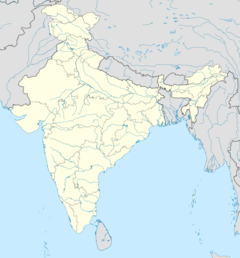| Bhavaniswar Mandir | |
|---|---|
 Bhavaniswar Mandir | |
| Religion | |
| Affiliation | Hinduism |
| Location | |
| Location | Baranagar Murshidabad |
| State | West Bengal |
| Country | |
| Geographic coordinates | 24°15′10″N88°14′36″E / 24.2528°N 88.2432°E |
| Architecture | |
| Completed | 1755 |
Bhavaniswar Mandir, is located at Baranagar in the Murshidabad-Jiaganj CD block in the Lalbag subdivision of Murshidabad district in the Indian state of West Bengal.







